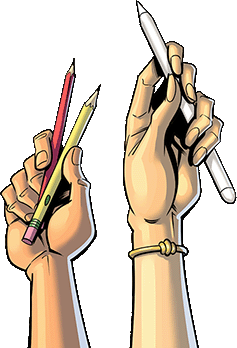Ideas to Upgrade Your Comic Book Printing – Funny, Creative, and Cute
December 17, 2020
Creating a professional-looking comic on your own takes some significant skill. Even when partnering with a professional comic printing company, the small details that make your comic complete require a careful eye.
Getting creative with your comic book covers and overall design is just one part of taking your printing to the next level. There isn’t a single set step-by-step method for making your comic books’ art more creative, as much of it will depend on the comic series’ genre. Here are some top tips that you can combine to make your story stand out.
Minimalist Title Page or Inside Cover
Your comic cover should show off the depth of the art your readers should expect inside. Whether you’re writing a superhero comic or a film noir-influenced detective comic, you should use a color palette that accurately sets the comic strip or series’ mood.
However, the inside title page or inside front cover is a great place to experiment with minimalist designs that focus on a central object or character against a plain or abstract backdrop. This can be used to hint at events to come or focus on a supporting character who will play an essential role in that issue.
In individual comic issues, you may want to forgo the formal title page to make the most of the available space. In that case, printing an extra character sketch or illustration on the inside front cover is the best option.
About the Author Page
An About the Author page enables you to connect with your readers and them to your other work. Besides including your basic biographical information, you can include your social media information, website, and a list of other works.
Try to include an About the Author page on the inside front or back cover. If you don’t have much to say about yourself or are short on space, you can keep this section to a half-page.
Next Issue Preview
Even if you’re not creating a massive ongoing series like the Spider-Man franchise, you can include a small next issue or volume preview. Use snippets of images and texts to create a collage, or include a key panel or two from the issue.
Like with the About the Author page, the preview page makes sense to include at the end of the issue. You might not need a full-page preview, especially if you haven’t completed much of the art yet. Try doing a half-page preview on the top of the inside back cover, with the About the Author blurb on the bottom half.

Reader Question Pages
Once you’ve built up a small fan following, you can start soliciting readers’ questions to answer in the next issue. This will often take up a page or less and can be accompanied by a small illustration to keep it visually interesting.
Reader question pages are often most relevant for fantasy and sci-fi series with significant worldbuilding. Authors can choose to use reader question pages to add on or clarify information that readers may find useful, or to give insight into their writing process. Readers may also ask serious or funny questions about their favorite characters, which can inspire authors to include those characters more in the future.
Being True to Yourself
The best way to showcase your creativity is to include what you want to in your comic books. You don’t have to perfectly mirror a Marvel or DC Comics story with your cover design or superhero narratives. Selling comics requires genuine expression in your comic book illustrations and text.
Comix Well Spring prints comic books in full color and black and white. Once you’ve created a comic book, we’re your best partner for printing a final product you can sell at indie comic stores, conventions, and more. Get started today with our easy online ordering system with 25-copy minimums.


